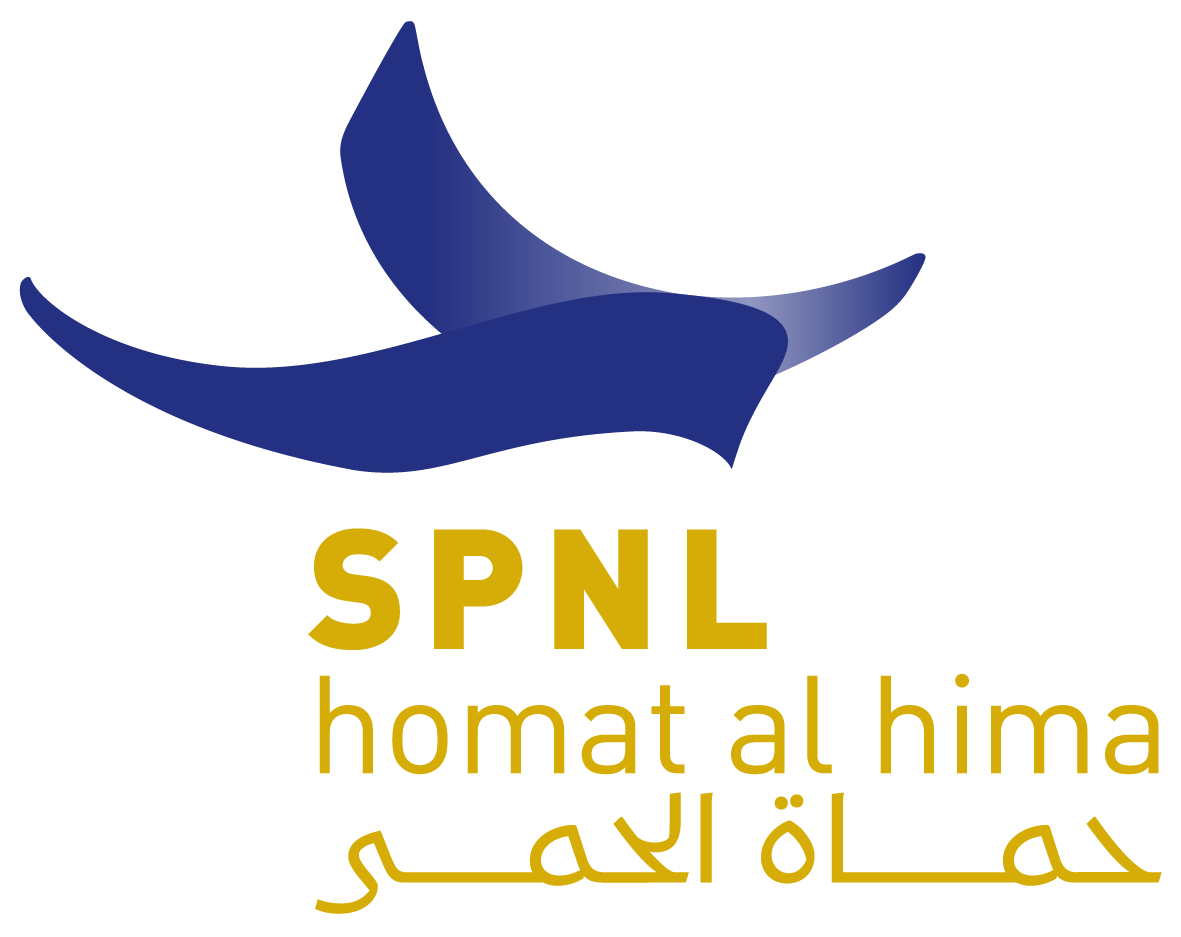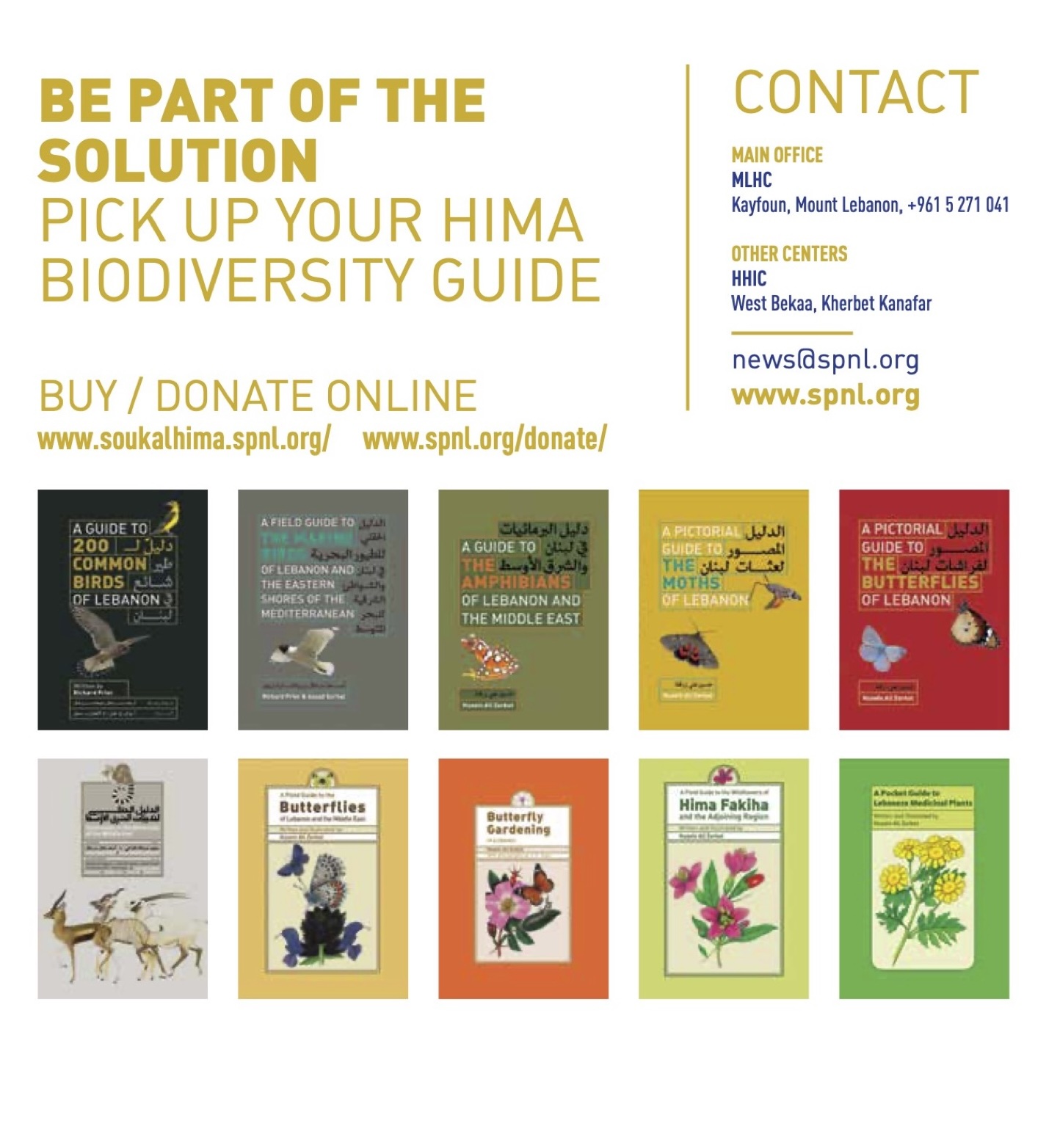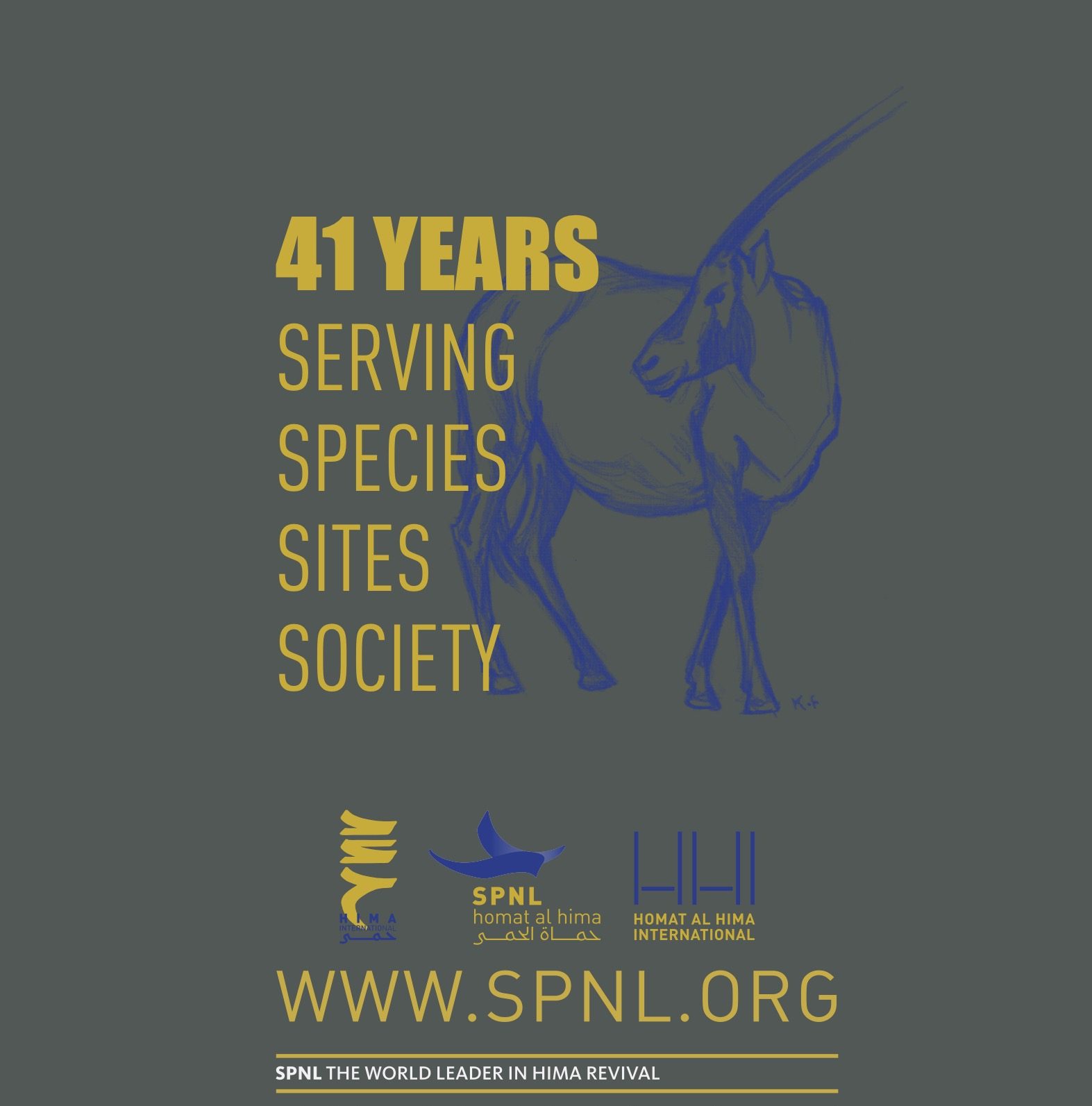Sandgrouse is published by Ornithological Society of the Middle East- OSME and contains papers and short notes on the ornithology of the OSME region, provides bird and conservation news from the region and a comprehensive round up of bird sightings in the Middle East, the Caucasus and Central Asia.
The current issue of Sandgrouse is volume 39 (2) Summer 2017 includes a paper titled: Interesting bird records for Lebanon including a Diederik Cuckoo Chrysococcyx caprius, two Red Crossbills Loxia curvirostra and the first records of Macqueen’s Bustard Chlamydotis macqueenii and Blue-cheeked Bee- eater Merops persicus for over 58 and 70 years respectively.Published by GHASSAN RAMADAN-JARADI, FOUAD ITANI & ASSAD SERHAL
During 2016, monitoring of illegal killing of birds was adopted by the Society for the Protection of Nature in Lebanon (SPNL—BirdLife Lebanon) and implemented by us in cooperation with local communities. This project enabled us to discover two new species for Lebanon and to record some species that had not been seen in Lebanon for many years.

Ruddy Shelduck Tadorna ferruginea. In nearby countries, the Ruddy Shelduck is a resident and rare winterer in Turkey (Boyla 2016); a former breeder, rare passage migrant, winterer and non-breeding summer visitor in Israel and a vagrant to Jordan (Shirihai et al 1999) and a former breeder, common winter visitor and scarce passage migrant in Syria (Murdoch & Be on 2008). In Lebanon there are two previous records: one shot at Beirut 17 November 1958 (Flach 1959) and one decomposed corpse at Bishmezzine, a man-made marsh, 26 February 2006 (Ramadan Jaradi et al 2008). On 7 December 2016 a ock of 25 was ying above hunters in Jdeidit Al Fekiha, Baalbek district, they were able to ‘take’ nine birds. On 12 December 2016 a ock of six individuals was ying over the same hunters in the same area; the hunters shot all six. On 20 December 2016 one individual was shot in the Akkar plain, north Lebanon. On 20 January 2017 two individuals ew over a hunter who shot one of them (Plate 1), Marjayoun plain, southern Lebanon. These are the 3rd–6th reports respectively for Lebanon and the rst records for over 10 years.
Macqueen’s Bustard Chlamydotis macqueenii.
Macqueen’s Bustard is found in the desert and steppe regions of Asia, east from the Sinai peninsula extending across Kazakhstan east to Mongolia. It was and probably is still heavily overexploited, currently Vulnerable, and has declined considerably in number (BirdLife International 2016). Based on two records in 1958: singles at Ainbal 12 October and south of Baalbek 30 October (Flach 1959), this species was considered a vagrant in Lebanon. During a recent quail hunting trip, a Macqueen’s Bustard (Plate 2) was shot 13 November 2016 at Sinay (Nabatieh governorate, south Lebanon). The hunter claims to have shot another bird earlier the same month. During a hunting trip on 22 November 2016, another Macqueen’s Bustard was shot at 900 m asl in Rachaya Al Foukhar, southeast Lebanon. These are the 3rd and 4th records and the first for over 58 years.

Li le Bustard Tetrax tetrax. The Li le Bustard was represented in Lebanon by one record in October 1958 (Ramadan-Jaradi et al 2008). In 2013/2014, four observations of this species in November and December constituted the rst records for over 64 years and suggested the species could be a scarce passage migrant (Ramadan-Jaradi et al 2015). More recently, 9 individuals were shot in December 2016: one was shot 8 December 2016 at Al Arida coastal area, north Lebanon, another 11 December 2016 , Blat area, Jbeil (Byblos), three (Plate 3) were shot 19 December 2016, Akkar plain, north Lebanon, two were in the same area 20 December 2016, one 26 December 2015 at Ras Baalbek in north Lebanon and one 30 December 2016, Sareen El Fawqa, south of Ras Baalbek. These records suggest that Li le Bustard is a scarce passage migrant which probably a empts to unsuccessfully overwinter due to excessive hunting.

Sociable Lapwing Vanellus gregarius. The Sociable Lapwing is listed as Critically Endangered (BirdLife International 2016) because its population has undergone a very rapid reduction in size for reasons that are poorly understood but are likely to be partly due to hunting along its migration yway. In Lebanon there were two records only until 2004: a small ock at Ryaq, Beqaa valley, 30 October 1958 (Flach 1959) and three in a cultivated eld above Qaraoun lake 22 October 2004 (Ramadan-Jaradi et al 2004). On 8 October 2016, one bird was shot at Al Doussa, Akkar, during a quail hunting trip. The bird was on the ground next to the quail calling machine. Examination of photos revealed a bird with black legs and a short black bill, white tail with a black terminal band and the head with a striking pattern (Plate 4). This record is the third but the first for over 12 years.

Diederik Cuckoo Chrysococcyx caprius. The Diederik Cuckoo is a common breeder in sub-saharan Africa, Yemen and Oman (BirdLife International 2016). One individual had been recorded in 1982 as a vagrant in Cyprus by Lobb (1983). In March 1994, Mark Lawlor watched a Diederik Cuckoo in Eilat, Israel, for about a week (Israeli Birding 1994, Shirihai 1996). A male Diederik Cuckoo was at Al A a, near Bani Saad (central Saudi Arabia) 3 July 2015, 450 km north of its previous most northerly Saudi Arabian location, extending its breeding range considerably (Birds of Saudi Arabia 2016).

Porter & Aspinall (2010) indicated it is a vagrant in southwest Saudi Arabia. More recent data indicates that Diederik Cuckoo is a rather scarce to uncommon summer breeding species in southwest Saudi Arabia (Babbington in li ). In Lebanon, a small Cuckoo with glossy copper green areas on the back and whitish brown underparts and markings on the head was shot by a hunter in Al Ghassaniya (33.4176° N, 35.3584° E), south Lebanon, on 1 December 2016. The bird was found on the ground then took o and landed on a Carob tree Ceratonia siliqua. When it took o from the tree the hunter shot it thinking it was a common starling given its glossy look. The bird was identi ed on site as Diederik Cuckoo and photographed by FI. Closer examination of the photo by Babbington showed the bird is a juvenile due to its having at least spots on the underparts, pale base of bill and brown on the wings. Could this species exhibit long-range vagrancy?
Blue-cheeked Bee-eater Merops persicus. In the Middle East, this species is mainly a summer breeding visitor to south and eastern Turkey, Iran, Iraq, southeast Arabia, Syria, Jordan, Israel, Sinai and Egypt; otherwise it is widespread (normally uncommon) on passage, chie y the Near East and Egypt (Shirihai 1996). In Lebanon, a small colony of c10 pairs in 1945 was found near Beirut (Leavesley in Kumerloeve 1962), but there has been no subsequent evidence of breeding (Kumerloeve 1962) or of records (Ramadan-Jaradi & Ramadan-Jaradi 1999, Ramadan-Jaradi et al 2008). In the morning of 10 November 2016, a hunter shot two individuals of this species that were ying high over an orchard of banana trees, at Abu Al Asswad, 16 km north of Tyre city in south Lebanon. It is a large bee-eater with slender black bill, black eye stripe, rusty red underwings, and chestnut throat. The dull green colour and absence of long tail projections of the individual in Plate 6 indicate a juvenile. This is the rst record of this species for over 70 years.
Red Crossbill Loxia curvirostra. In nearby countries, the Red Crossbill is resident in Turkey and Cyprus (Porter & Aspinall 2010) and vagrant in Syria where two were recorded at Abu Qubeis reserve on 2 September 2010 (Balmer & Murdoch 2011). In Jordan, it is a vagrant with a record of two individuals 29 December 1998 at Dana ((L Linnar & E Nieuwdorp) accepted by the Jordan Bird Records Committee (Jordan Birdwatch 2016). Red Crossbill had regular occurrence in Israel as a winter visitor and occasional breeder until the 1980s, and has been absent since 1994. On 11 November 2014, a pair was photographed in Yanuv, Heffer valley, central Israel and 6 over Ramat Hovav, Negev (undated) (Israeli Birding 2016). Red Crossbill was never mentioned for Lebanon (Ramadan-Jaradi et al. 2008) until a pair was shot 12 March 2017 in Ftouh Kesrwan, an area above Nahr Ibrahim, by a minor who went hunting illegally with his father in spring (Plate 7). This is the first record for Lebanon.

Eurasian Bullfinch Pyrrhula pyrrhula. On 29 November 2014 a female Eurasian Bullfinch was shot in Douar above Bekfayya and a male was shot 15 January 2015 in Ehden. Both were adults (black bills, caps and faces). These were the rst two records for Lebanon (Ramadan-Jaradi et al 2015). On 9 November 2016 a hunter shot a male at 850 m asl in Aley. A hunter also shot a male at 780 m asl in Hermel, north Lebanon, 20 November 2016 (Plate 8). These are the third and fourth records for Lebanon.
LITERATURE CITED
Balmer, D & D Murdoch. 2011. Around the Region. Sandgrouse 33(1): 80–93.
Boyla, KA. 2016. The Checklist of the Birds of Turkey (v.2016.01). http://birdwatchturkey.com/checklist. Bird Forum. 2016. www.birdforum.net/showthread.php?t=182790.
BirdLife International (2016). http://datazone.birdlife.org/species/factsheet/diederik-cuckoo-chrysococcyx-caprius/details.
Birds of Saudi Arabia. 2016. www.birdsofsaudiarabia.com/2016/01/rare-and-unusual-birds-seen-in-saudi.html
Flickr. www.flickr.com/photos/jawadarromi/5040992925.
Israeli Birding. 1994. www.israbirding.com/reports/historical_records/didric_cuckoo_eilat.
Israeli Birding. 2016. www.israbirding.com/irdc/bulletins/bulletin_10.
Jordan Birdwatch. 2016. www.jordanbirdwatch.com/jbrc.html
Lobb, MG. 1983. Didric Cuckoo in Cyprus. Bulletin British Ornithologists’ Club 103: 111.
Murdoch, DA & KF Betton. 2008. A Checklist of the birds of Syria. Sandgrouse Supplement 2.
Porter, R & S Aspinall. 2010. Birds of the Middle East. Christopher Helm, London.
Ramadan-Jaradi, G, T Bara & M Ramadan-Jaradi. 2008. Revised checklist of the birds of Lebanon 1999–2007.
Sandgrouse 30(1): 22–69.
Ramadan-Jaradi, G, A Serhal & F Itani. 2015. First two records of Eurasian Bullfinch Pyrrhula pyrrhula and
first records of Marbled Duck Marmaronetta angustirostris and Little Bustard Tetrax tetrax for over 14 and
56 years respectively, for Lebanon. Sandgrouse 37(2): 180–182.
Shirihai, H. 1996. The Birds of Israel. Academic Press, London.
Shirihai, H, IJ Andrews, GM Kirwan & P Davidson. 1999. A Checklist of the birds of Israel and Jordan.
Sandgrouse 21: 36–44.
Ghassan Ramadan-Jaradi, Faculty of Science, Section 1, Lebanese University, Beirut, Lebanon. grjaradi@hotmail.com
Fouad Itani, Lebanese Sayd (hunting) Magazine, Quraytem, Beirut, Lebanon. fouaditani@yahoo.com
Assad Serhal, Society for the Protection of Nature in Lebanon, BirdLife Lebanon, Beirut, Lebanon. aserhal@spnl.org






